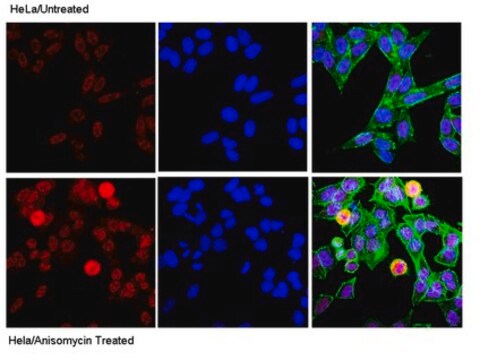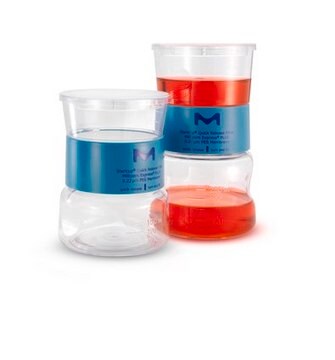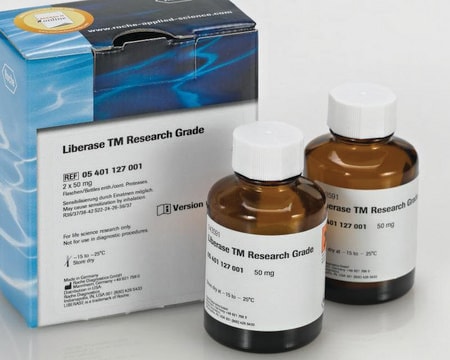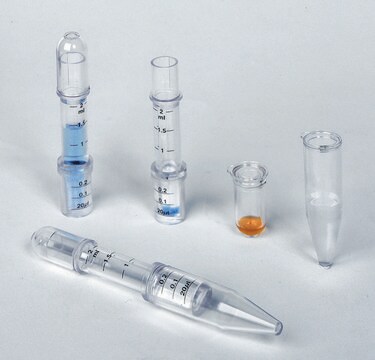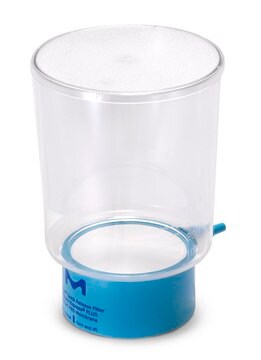ABE24
Anti-BPTF Antibody
from rabbit, purified by affinity chromatography
Sinônimo(s):
Protein Bptf, Bromodomain PHD-finger Transcription Factor
About This Item
Produtos recomendados
fonte biológica
rabbit
Nível de qualidade
forma do anticorpo
affinity isolated antibody
tipo de produto de anticorpo
primary antibodies
clone
polyclonal
purificado por
affinity chromatography
reatividade de espécies
mouse, human
técnica(s)
immunoprecipitation (IP): suitable
western blot: suitable
nº de adesão NCBI
Condições de expedição
wet ice
modificação pós-traducional do alvo
unmodified
Informações sobre genes
human ... BPTF(2186)
mouse ... Bptf(207165)
Descrição geral
Especificidade
Imunogênio
Aplicação
Epigenetics & Nuclear Function
Transcription Factors
Western Blotting Analysis: 0.2 µg/mL from a representative lot detected BPTF in 50 µg of wild-type, but not Bptf-knockout, mouse embryonic fibroblast (MEF) lysate (Courtesy of Joseph Landry, Ph.D, Virginia Commonwealth University School of Medicine, U.S.A.).
Immunoprecipitation Analysis: A representative lot co-immunoprecipitated Ctcf and SA2 with BPTF from mouse embryonic stem cell (mESC) extract (Qiu, Z., et al. (2015). Mol. Cell. Biol. 35(1):224-237).
Western Blotting Analysis: A representative lot detected BPTF in Ctcf and SA2 immunoprecipitates from mouse embryonic stem cell (mESC) extract (Qiu, Z., et al. (2015). Mol. Cell. Biol. 35(1):224-237).
Western Blotting Analysis: A representative lot detected BPTF in ESC, MEF, and CD8+/CD4+ double-positive (DP) thymocytes from wild-type, but not Bptf-knockout, mice (Qiu, Z., et al. (2015). Mol. Cell. Biol. 35(1):224-237).
Note: ABE24 is not recommended for Chromatin Immunoprecipitation (ChIP). For ChIP application, please use ABE1966.
Qualidade
Western Blot Analysis: 0.05 µg/mL of this antibody detected BPTF in 10 µg of NIH/3T3 cell lysate.
Descrição-alvo
forma física
Armazenamento e estabilidade
Nota de análise
NIH/3T3 cell lysate
Outras notas
Exoneração de responsabilidade
Não está encontrando o produto certo?
Experimente o nosso Ferramenta de seleção de produtos.
Código de classe de armazenamento
12 - Non Combustible Liquids
Classe de risco de água (WGK)
WGK 1
Ponto de fulgor (°F)
Not applicable
Ponto de fulgor (°C)
Not applicable
Certificados de análise (COA)
Busque Certificados de análise (COA) digitando o Número do Lote do produto. Os números de lote e remessa podem ser encontrados no rótulo de um produto após a palavra “Lot” ou “Batch”.
Já possui este produto?
Encontre a documentação dos produtos que você adquiriu recentemente na biblioteca de documentos.
Nossa equipe de cientistas tem experiência em todas as áreas de pesquisa, incluindo Life Sciences, ciência de materiais, síntese química, cromatografia, química analítica e muitas outras.
Entre em contato com a assistência técnica
